Top 9 Chickens That Lay Blue Eggs (With Pictures)
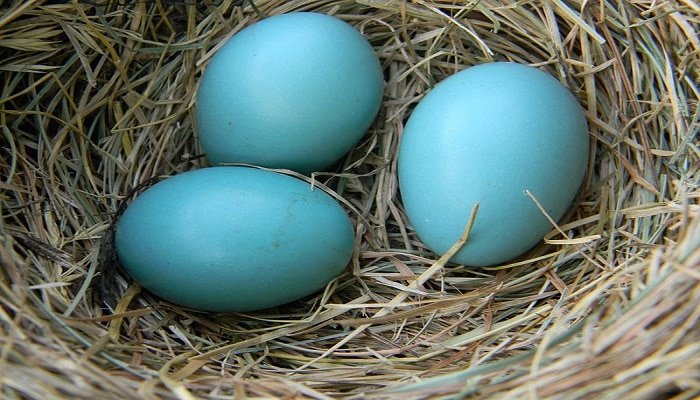
If you are interested in learning about the best chickens that lay blue eggs, either for curiosity purposes or as a chicken farmer, then you are on the right page.
In this article, you will learn about the 9 chicken breeds that are capable of laying Blue eggs.
You will also learn about their history, the phenomenon behind blue eggs, if they can be used for backyard chickens, and how available they are.
In addition, you will get the answers to most of the frequently asked questions about chickens that lay blue eggs.
So, if this is what you want, continue reading to learn about the breeds that lay blue eggs.
Now, let’s delve in!
Get the answer to this question: When Do Chickens Start Laying Eggs Regularly?
The 9 Chicken Breeds That Lay Blue Eggs
1. Araucana
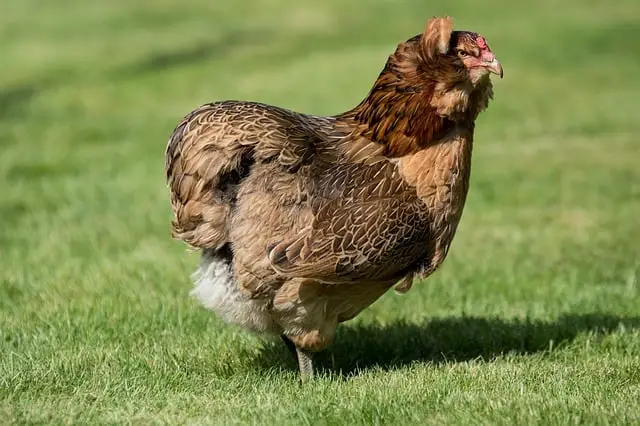
The Araucana chicken is said to have originated from South America and it was named after the Araucana region in Chile.
This particular breed was developed by crossing two different breeds which are the Collonocas and the Quetros.
The Araucana has a high energetic personality which can sometimes be unpredictable, extremely curious, and friendly towards humans.
However, this feature makes them incredible food finders because they are willing to search throughout the day for the tastiest bugs and plants.
In addition, their ear tufts and lack of tail make them stand out among the rest breeds.
Below are some of Araucana’s Features:
- Primary Use: Dual purpose (Meat and Egg laying)
- Colors: Golden, black, white, and duck wing silver.
- Egg size: Medium – Large
- Size (Rooster): 5 lbs
- Egg color: Blue
- Size (Hen): 4 lbs
- Annual Egg production: 160 – 180
2. Ameraucana

The Ameraucana breed came into existence through the cross-breeding experiment that began with Mr. Keller.
He started this experiment in 1925 at Pennsylvania Pratt experimental farm.
Hence, the intention is to create chickens that can lay the same blue eggs as the Araucana but not the same genes with it.
It took so many years before chicken breeders were able to produce the Ameraucana in 1970.
Then by 1984, the American Poultry Association was able to recognize it as a legitimate breed.
So, the Ameraucana is an American breed whose origin is in the USA. In fact, its name is a combination of “American” and “Araucana.” As a result, it is an Araucana descent.
That said, the Ameraucana has a docile and friendly nature and gets along well with both and children adults.
But it might not make a good pet as it does not like to be picked up.
In addition, they have reddish eyes which makes them look fierce and they also have a red pea comb and Wattles.
Below are some of Ameraucana’s Features:
- Primary Use: Egg laying
- Annual Egg Production: 150 – 180
- Rooster Size: 6.5 lbs
- Egg Size: Large
- Hen Size: 5 5 lbs
- Egg Colour: Blue
- Colors: White, silver buff brown-red, blue wheaten, wheaten, blue, and black.
You may also like to read about these 6 Best Chicken Egg Incubators for Chicken Eggs and Other Birds
3. Easter Egger

In the US the Easter Egger is not really classified as a breed because they have a similar appearance to Ameraucanas.
Sometimes people describe the Easter Egger as an Ameraucanas that does not conform to the standard.
Because they are rainbow layers that can lay any color of egg, it can be pink, green-brown, or olive color.
However, this breed has a very docile and gentle nature and can be sometimes curious about things but great with kids.
They are excellent layers and also low in Maintainance as they do well in a mixed flock as well as good brooders.
Below are some of Easter Egger’s Features:
- Primary Use: Egg layer and sometimes dual-purpose too
- Annual Egg Production: 200
- Rooster Size: 5 lbs
- Egg Size: Medium – Large
- Hen Size: 4 lbs
- Egg Color: Blue (and other colors too)
- Colors: White, Black Brown, and mixed.
4. Cream Legbar

This particular breed came into existence in the 1930s in the UK at Cambridge University.
It is a mix of Barred Plymouth Rocks, Brown Leghorns, Gold Campines, and of course the Araucanas.
It sure inherited its blue-laying egg gene from the Araucanas.
One interesting thing about the cream Legbar is that they are auto-sexing meaning you can easily tell their sex at the hatching stage.
The male Cream Legbars have a light coat with a yellow spot on their head, while the female Cream Legbars have stripes.
Cream Legbar is an independent chicken that prefers to be free rather than be kept in a place.
In fact, when you confine them to a particular place it makes them anxious, fickle, and difficult to handle.
However, they are low-maintenance chickens that can be docile and friendly when free.
Below are some of cream legbar’s features:
- Primary Use: Egg laying
- Annual Egg Production: 200 and above
- Rooster Size: 7 lbs
- Egg Size: Large
- Hen Size: 6 lbs
- Egg Color: Blue
- Colors: Cream and grey
Read this article next: Top 10 Chicken Breeds That Lay Large Eggs [With Pictures]
5. Arkansas Blue
The Arkansas Blue chicken is a breed that is experimental and produced by the University of Arkansas.
In this case, the other mixed breed involve in producing this chicken are the Leghorn and the Araucana and this was done by Dr. Keith Bramwell.
Although they are the descendant of the Araucana yet, they look similar to Sumatra with pale blue/gray feathering and a pea comb.
The only thing they received from this side of the lineage is the ability to lay blue eggs and they lay eggs very well.
Unfortunately, this chicken has not formerly been recognized by the American Poultry Association (APA) as of this writing.
Also, they can not yet be used as backyard pets because they do not mix well with other chickens as well as humans due to panic.
Below are some of Arkansas’s Features:
- Primary Use: Egg laying
- Annual Egg Production: 250 – 350
- Rooster Size: 6 lbs
- Egg Size: Medium – Large
- Hen Size: 4 – 5 lbs
- Egg Colour: Blue
6. Azure Blue

The Azure chicken breed is recent experimental produce that comes from the US.
It does not have an old origin as it is not a pure breed. But a mix breed of Welsumers Cream Legbars, White Legbars, and Sage Eggers.
Actually, it is specifically bred to be a small chicken that will be able to lay enough eggs.
They do well during harsh weather conditions like the winter season. Also, the chicken and a have a friendly nature, a good temperament, and a curious personality.
In addition, they are good small-scale chicken farmers who are looking forward to high-quality eggs and a productive egg-laying breed.
Below are some of Azure Blue’s Features:
- Primary Use: Egg laying
- Annual Egg Production: 300
- Rooster Size: 5 lbs
- Egg Size: Large
- Hen Size: 4 lbs
- Egg Colour: Blue
- Colors: Silver-white
Trending now: 16 Myths About Fertilized Chicken Eggs That You Already Believed
7. Lushi
Not much is known about the chicken breed but it’s said to have originated in China.
Lushi is a small size chicken with multiple color plumage and for now, does not have a set standard.
However, they are not so good layers as they do not produce many eggs.
Below are some of Lushi’s Features:
- Primary Use: Dual purpose (meat and egg-laying)
- Annual Egg Production: 100
- Rooster Size: 4 lbs
- Egg Size: Small
- Hen Size: 3 lbs
- Egg Colour: Blue and Pink
- Color: White
8. Dongxiang
The Dongxiang chicken comes from the sub-tropical Jiangxi province of southeast China.
This breed is a fibro melanistic bird which means they have a black skin color.
However, their skin is not as dark as that of the Ayam Cemani which is a well-known fibro-melanistic bird.
Actually, the Dongxiang chicken is a small chicken breed and does not have much of a good egg layer.
Recently, there has been a creation of a partridge-colored Dongxiang that is capable of laying more eggs through breeding programs.
Hopeful it gets better.
Below are some of Dongxiang’s Features:
- Primary Use: Dual purpose (meat and egg-laying)
- Annual Egg Production: 100
- Rooster Size: 3.5 lbs
- Egg Size: Small
- Hen Size: 3 lbs
- Egg Colour: Blue
- Color: Black
9. Whiting True Blue
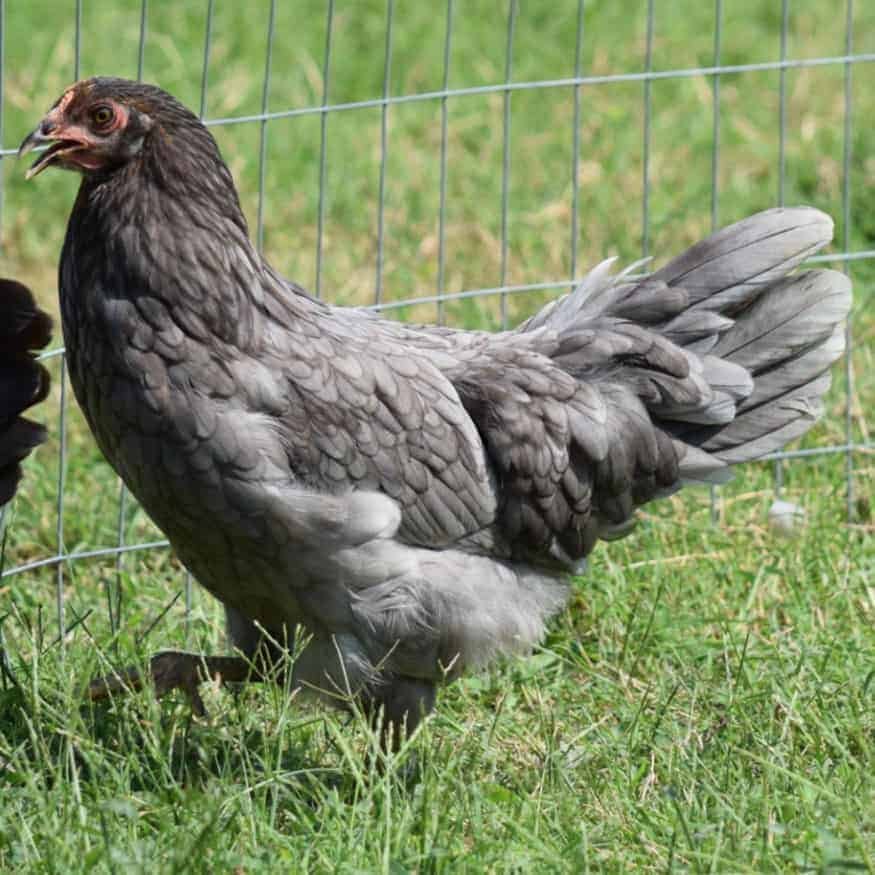
You might be wondering what does fishing got to do with chickens. Well with White True Blue everything.
History has it that a gentleman man, Henry Hoffman, was a keen fly fisherman who at the time also raised chickens on his parent’s farm.
He usually selects the best hackle feathers and will use them for his fishing fly-tiring hobbies.
Around the 1960s, he noticed that the quality of feathers available became commercially poor.
This is when he decided to start breeding his own chicken in order for him to have more feathers to use.
Mr. Henry met with professor Whiting who was a poultry geneticist and they decided to start a business together.
The business thrived, producing high-quality feathers for fly tying as well as a line of blue-egg-laying birds known as the Whiting True Blue.
This breed is a good layer and has a good temperament, is tolerant of other breeds and they are better off free than kept in a confinement.
Although, they are not yet officially recognized so you get to find them in a variety of colors.
Below are some of Whiting True Blue’s features:
- Primary use: Egg laying
- Annual Egg Production:
- Rooster Size: 7 lbs
- Egg Size: Medium – Large
- Hen Size: 5.5 lbs
- Egg Colour: Blue
- Color: Grey White Black
Conclusion
Now you know that the only original breed that lays blue eggs are the Araucana, Dongxiang, and Lushi.
While the rest of the breeds listed in this article were experimentally created by mankind.
Because mankind always wants to improve nature itself and the Chickens that lay blue eggs were no exception.
So, you can go over the article if you haven’t and read up to get every detail you need about chickens that lay blue eggs.
Frequently Asked Questions
Why are some chicken eggs blue?
The reason why some chickens have blue eggs has to do with a virus. Precisely a retrovirus.
A retrovirus infected the Mapuche (Araucana) hens at some point in the past. The Dongxiang and Lushi were also infected by a similar but different retrovirus.
This retrovirus included ribonucleic acid, which inserted itself into the infected organism’s DNA profile and rewrote it.
As a result, instead of laying a standard white or brown egg, the script now calls for a blue egg to be laid.
If you want to understand more about this blue egg phenomenon, you can read more about it here.Can I eat a blue chicken egg?
Yes. Blue-shelled eggs are safe to eat as long as you follow other egg safety guidelines.
The external color does not have any impact on the quality of the egg. Because it has the same quality as that of a brown or white-shelled egg.What Chicken Breed Lays The BLUEST Eggs?
Araucana eggs are recognized to be the bluest eggs produced by any of the blue egg-laying hens. This popular breed originated in Chile, and as far as we know, all other blue egg-laying varieties are descended from Araucanas.
What Other Colors Of Eggs Do Chickens Lay?
Apart from the normal brown and white colors and the chickens that lay blue eggs on this list, there are other chicken breeds that lay other colors like green, cream, dark chocolate brown, white, and pinkish-hued eggs too.
Can eggs change color over time?
Yes, however, they will not change color from white to blue, or from brown to white. But, what can happen is that your hens’ diet and living conditions may stress them, resulting in a tiny change in the color of the eggshell, as well as tan or brown speckles.
Does Egg Color Affect Nutritional Value?
No, it does not. This is just a common misconception. As is the misconception that the color of an egg yolk (which may be easily manipulated) determines nutritional value.
The nutrition of chicken eggs (which are a nutrient-dense superfood that we consume on a daily basis) is primarily determined by the size of the egg and yolk, the chicken’s diet, health, and the quantity of sun exposure the chicken receives for enhanced Vitamin D3.
References
- ChickensandMore.com – Top 8 Best Chickens That Lay Blue Eggs
- ThePeasantsDaughter.net – 10 Chicken Breeds That Lay Blue Eggs (With Pictures!)




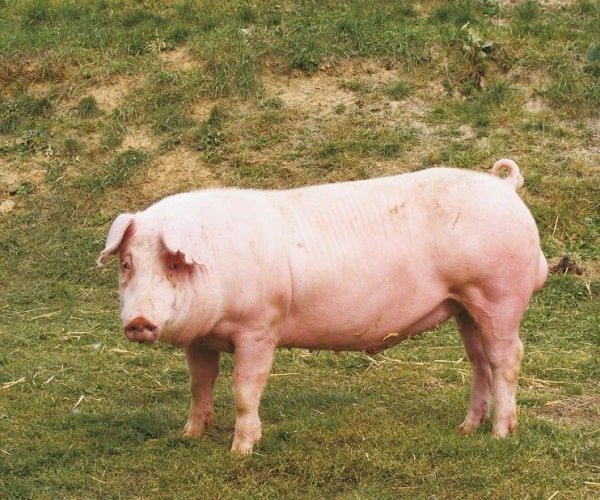
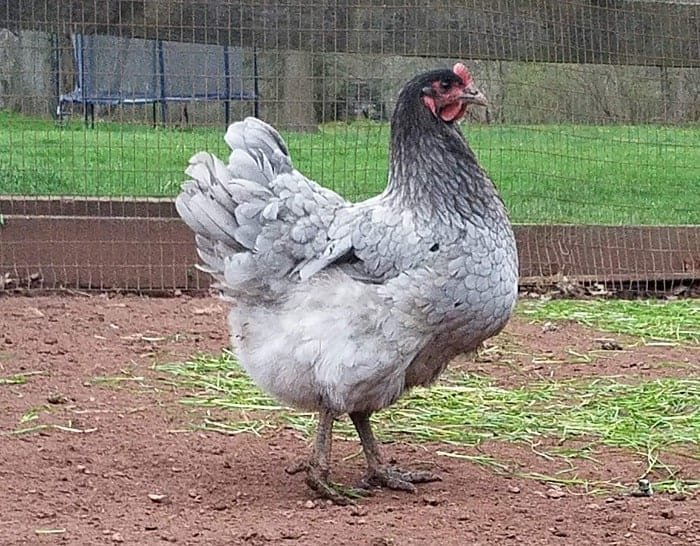
Good day
I am looking for breeders of Whiting True Blue chickens in Gauteng or close by?
Thank you for the info on chicken’s. It was very informative.